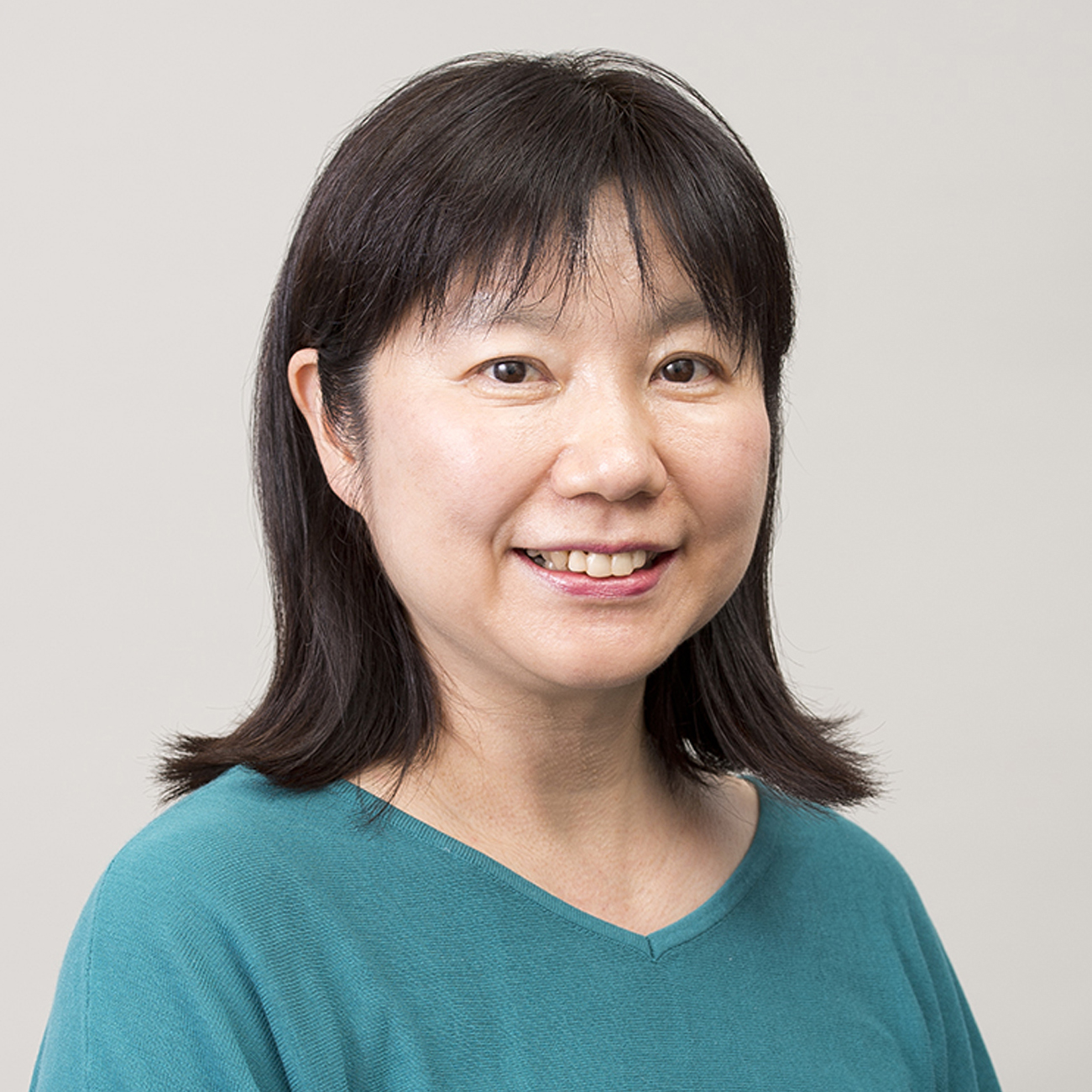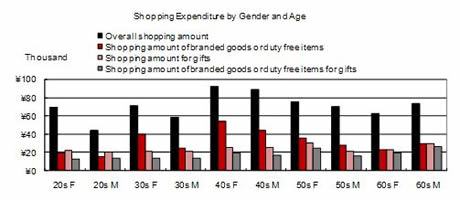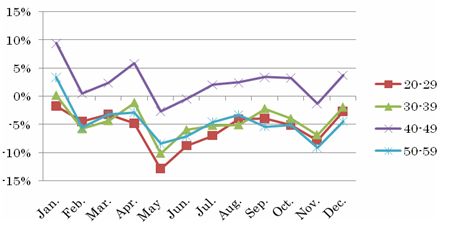“New Human Being” in Their 40s Still Leads the Travel Market: Japanese Overseas Travelers’ Shopping Trends (part 1)
The "New Human Being" generation that led the shopping and travel market during the bubble economy is now in their forties. Attention is paid once again on their overseas travel and shopping trends.

Yoko Hayano Lead Consultant
In 2007, the number of Japanese international departures declined for the third time since it peaked in 2000. Japanese overseas travel market will continue to be challenged by unfavorable factors such as the increasing fuel surcharge, the weakening of yen against currencies of popular destination countries including Euro and the further reduction of air seat supply for leisure market caused by carriers’ strategy to focus on more profitable business market.
A careful observation of the Japanese international departures by gender and age, however, allows us to find still active segments among slow outbound market. In addition to the senior travelers (aged 60+), the growth in age groups under 20 years old and that of forties is obvious in many months in 2007, which is a clear contrast to the twenties, thirties and fifties that saw a decline in almost every month.
The result of “The Overseas Shopping Trends Survey” conducted by JTM reveals that among Japanese who traveled abroad in 2007, males and females in their forties and families with children aged 18 and below made a larger amount of purchase while traveling overseas than other segments. Interestingly, the result quite corresponds to the segments marking high rate of growth in international departures.
Why are Japanese their forties particularly active in shopping abroad when outbound travel market itself remains stagnant? There are several factors. First, many of men in their forties are frequent business travelers, and therefore have more occasions to purchase gifts and souvenirs. Second, people currently in their forties belong to a generation that has fortunately survived the big change in social and work environment after the crush of Japan’s bubble economy in early 1990s. This generation started working during the bubble economy when they could get a job with comparatively advantageous terms. When the Japanese economy entered into its structural reform period, their wages had not yet reached high enough to be included in the target of employment adjustment. As a result, in spite of current challenges in Japanese society, the forties today that are relatively well off, are active in consumption as individual and as family.
International tourism community appears to shift their attention from Japanese traveler to the fast growing Korean and Chinese travel market. However, it should be noted that Japanese travel market still has potential for success. The key for successful marketing lies in capturing this “New Generation in their 40s” segment that continues to lead Japan’s consumption activity since the bubble economy.
(The report continues to further analyze overseas shopping trends of Japanese in their forties)
*The “New Human Being” generation
Those who were born between 1960 and 1965 were called “Shin-jinrui”, which literally means ‘new human being,’ or ‘new human breed.’ They were so named because they had values quite different from preceding generations, and their way of thinking and acting was hard to understand for the elders.
Growth Rate of Japanese Depaerture By Age Group

Shopping Expenditure by Gender an Age

Average Shopping Amount by Travel Companion

